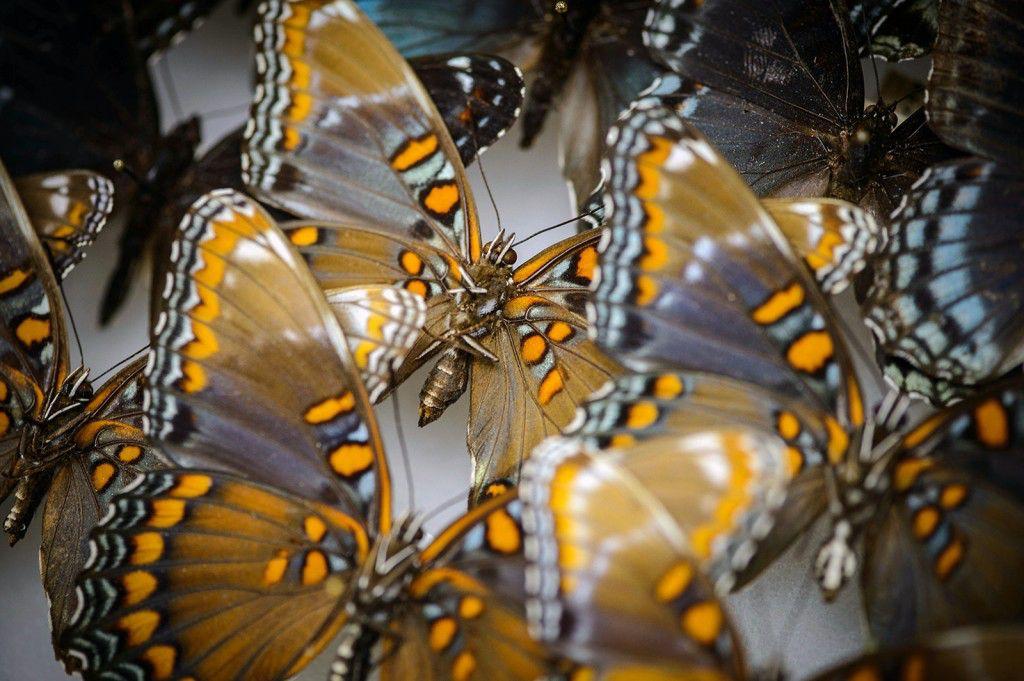
All roads lead to Rome. Such a confident statement serves as the basis for the age-old biological theory commonly known as the “many roads” theory. Supporters of this theory believe that many random paths connect different animals with similar traits.
But in a study published Sept. 8 in the science journal Nature Communications, researchers from Boston University and Michigan State University decided to challenge this vague evolutionary theory.
“A classic example of that [the theory] is the wing of a bat, the wing of a bird and the wing of a butterfly. They’re all wings, they all function in flying and they all sort of resemble each other to some degree,” said Dr. Jason Gallant, lead author of the paper and an assistant professor of zoology at MSU. “What we mean by ‘Rome’ is of course getting to the point where you get a wing and the roads to Rome mean all the different ways that you might evolve that particular function.”
Following this winged-theme, the researchers decided to apply the evolutionary concept to butterflies. Not just chosen for their beauty and charismatic nature, butterflies also represent a diverse family.
There are approximately 17,600 species of butterflies on this planet with distinctive and identifiable wing patterns, said Dr. Sean Mullen, the senior corresponding author of the study and an assistant professor of biology at BU.
“Butterfly wings are a great developmental model because they’re actually only a single cell layer thick,” Mullen said. “So it’s essentially like looking at the development of a piece of paper…They’re not three-dimensional, so it can be easier to interpret the [genetic] pattern that way.”
The methods of the 10-year-long study evolved from the swipe of a butterfly net to the genomic technology of this day and age.
Initially, BU researchers gathered North American butterflies known as “White Admirals,” as well as their blue-winged relatives “Red-spotted Purples.”
In northern areas of the United States, Red-spotted Purples coexist with a poisonous species known as “Pipevine Swallowtails.” As a response to the toxicity of the Swallowtails, birds have learned to avoid all blue butterflies. Over 65 million years ago, Red-spotted Purples adopted this darker façade for survival purposes.
This ability to adapt to the environment was what made the species ideal for the study. In order to figure out where the White Admirals and the Red-spotted Purples meet, the team searched for the exact gene that made the two butterflies different from one another.
There are approximately 17,600 species of butterflies on this planet with distinctive and identifiable wing patterns
“It’s actually the ancestral pattern that the great, great grand-butterfly [of the Red-Spotted Purples] is actually a White Admiral,” Gallant said. “So basically, it’s the same species, but it has two completely different colored wings.”
Hundreds of these collected butterflies were then lined up, and the appearance of their wings was recorded. From there, a long and tedious search for the origin of this wing discrepancy began.
“The whole genome is about 500 million letters long, so there’s a lot of potential, and each one of those [500 million letters] could have been the cause,” Gallant said. “So it’s really like finding a needle in a hayfield. That’s the metaphor that I use. So we really needed to reduce the hayfield to a haystack.”
This was where BU researchers came in. By scanning the DNA of the Red-spotted Purples and White Admirals for differing patterns of letters, Mullen and Gallant’s team were able to narrow down the search to about 200,000 potential causal base pairs.
Through a similar genetic sequencing process, Gallant honed in on three genes. One of them, a gene formally known as WntA, was discovered to have a retrotransposon, which is essentially a DNA virus. In simple terms, he cracked the code.
“The whole genome is about 500 million letters long…and each one of those could have been the cause.”
“DNA has to be copied from generation-to-generation or from cell-to-cell in order to make more butterflies,” Gallant said. “And periodically, there are accidents in that copying process where little bits are deleted or added.”
The deletion occurred in the exact same position as the retrotransposon in both butterfly lineages, Gallant said.
“So you have accidental events happening in the same region of the same gene, ultimately causing the same outcome for these animals,” he said.
The researchers also examined a butterfly species from Costa Rica and Ecuador to further pinpoint their genetic discrepancy. Lo and behold, those butterflies had deletions in the WntA gene, too.
But from this discovery arises another question: What does it all mean? If you ask Mullen, the findings suggest that many roads to a trait might not be as possible as one common detour.
“This strongly supports the hypothesis that there’s a conserved, sort of genetic pathway underlying the formation of wing patterns or, generally, across all butterflies,” Mullen said. “The biggest significance is that it suggests that we really can make predictions about how they [traits] wish to proceed.”
And this concept extends far beyond backyard mariposas. The study of trait acquisition applies to all areas of biology. This finding, which suggests the possibility of greater genetic predictability, could be applied to everything from human diseases to ecological epidemics.
Regardless, Gallant stated that one of the best findings was the simple fact that something was indeed found. To a scientist, sometimes an answer in itself is enough to satisfy.
“What I think is really neat about this is that an accident that occurred probably around 65 million years ago is something that’s led to the butterflies that we observe today,” he said. “There’s also just the pleasure of knowing what it is that makes those things different – being able to say, ‘That’s the reason why.’”























































































































